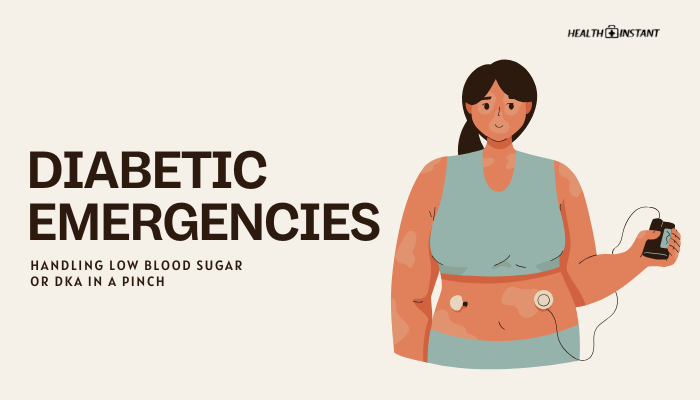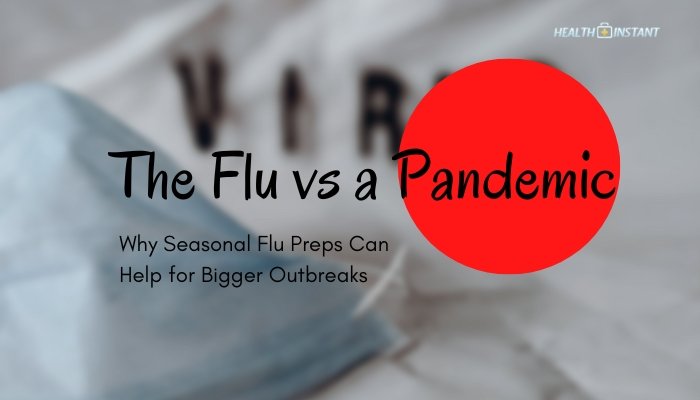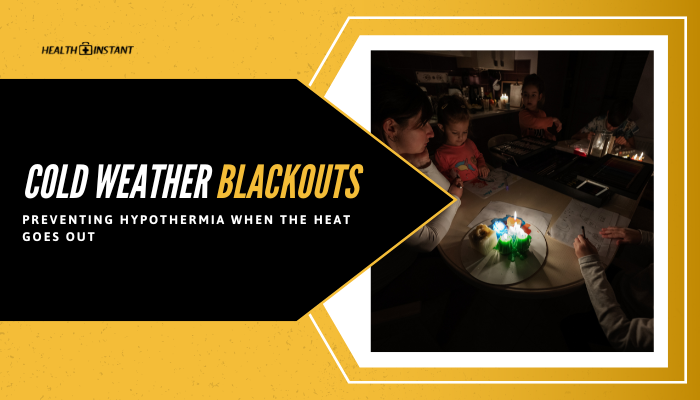Introduction
People with diabetes—Type 1 or Type 2—can face sudden, life-threatening complications if their blood sugar spikes too high or plunges too low. Prompt recognition of these emergencies, like hypoglycemia and diabetic ketoacidosis (DKA), can prevent serious organ damage, unconsciousness, or even death.
This guide reviews how to spot the warning signs and manage these urgent situations, providing care for yourself or a loved one until professional help arrives.
Overview of Diabetes Emergencies
Two major acute crises common to diabetes are:
- Hypoglycemia (low blood sugar): Typically occurs when glucose levels drop below normal (often <70 mg/dL). Symptoms can escalate swiftly, impairing mental function and leading to loss of consciousness if not addressed.
- Diabetic Ketoacidosis (DKA): Usually affects individuals with Type 1 diabetes, though it can appear in others. When insufficient insulin is present, the body burns fat for energy, producing high levels of ketones, causing acidity in the blood.
Both emergencies require urgent action. Hypoglycemia can often be corrected with quick sugar intake, while DKA typically needs clinical intervention.
Hypoglycemia (Low Blood Sugar)
Causes of Hypoglycemia
- Excess Insulin: Insulin doses or medications surpass the body’s actual glucose needs.
- Skipping Meals or Eating Less: Food intake lower than usual while taking normal diabetes medication.
- Increased Physical Activity: Exercise can drop blood sugar faster than expected.
- Alcohol Consumption: Alcohol can interfere with glucose release from the liver, contributing to low blood sugar.
Signs and Symptoms
- Shakiness, tremors
- Sweating and paleness
- Rapid heartbeat
- Hunger or nausea
- Irritability or anxiety
- Blurred vision
- Dizziness or confusion
- Headache
As levels keep dropping, severe symptoms may include slurred speech, loss of coordination, or fainting.
Immediate Steps to Correct Low Blood Sugar
- Check Blood Glucose
- If a meter is available, quickly measure the sugar level. If <70 mg/dL (or if symptoms are severe and you can’t test), treat as hypoglycemia.
- If a meter is available, quickly measure the sugar level. If <70 mg/dL (or if symptoms are severe and you can’t test), treat as hypoglycemia.
- Follow the 15–15 Rule
- Consume 15 grams of fast-acting carbs, e.g. 4 ounces (1/2 cup) fruit juice, regular soda (not diet), or glucose tablets.
- Wait 15 minutes, then recheck. If still low, consume another 15 grams.
- Consume 15 grams of fast-acting carbs, e.g. 4 ounces (1/2 cup) fruit juice, regular soda (not diet), or glucose tablets.
- Glucagon Injection
- If the person is unconscious or unable to swallow, glucagon kits can raise blood sugar.
- Administer per instructions and call emergency services.
- If the person is unconscious or unable to swallow, glucagon kits can raise blood sugar.
- Seek Medical Support
- If repeated attempts fail or severe symptoms (e.g., seizures) arise, contact emergency services.
Diabetic Ketoacidosis (DKA)
Causes of DKA
- Insulin Deficiency: Missing insulin doses or insufficient dosing.
- Infections or Illness: Body’s stress response to infection increases glucose and ketone production.
- New Diagnosis: In some Type 1 diabetics, DKA might be the first presentation of the disease.
Warning Signs of DKA
- Extremely high blood glucose readings (often >250 mg/dL).
- Frequent urination, excessive thirst, and dehydration.
- Fruity or acetone-like breath odor due to ketones.
- Abdominal pain or vomiting.
- Rapid breathing and confusion.
Initial Management and When to Seek Help
- Hydrate: If conscious, encourage water intake to combat dehydration.
- Check Ketones: For those who monitor ketones (urine or blood test), high ketone levels confirm DKA suspicion.
- Contact Medical Professionals: DKA nearly always requires hospital treatment (IV fluids, electrolyte rebalancing, insulin adjustment).
- Do Not Delay: Untreated DKA leads to severe organ damage and coma
When to Call Emergency Services
Call 911 or local emergency numbers if:
- The person becomes disoriented, unconscious, or has a seizure.
- There’s significant difficulty breathing or severe dehydration.
- Hypoglycemia can’t be corrected with oral sugar or if the person can’t safely swallow.
- DKA symptoms escalate, or the individual can’t keep fluids down.
Preventing Crises: Tips and Best Practices
- Regular Monitoring: Keep tabs on blood glucose several times a day, especially during sickness, stress, or routine changes.
- Medication Adherence: Consistently take prescribed insulin or oral meds; never skip doses unless instructed by a doctor.
- Meal Planning: Balance carbohydrate intake with medication schedules and activity levels.
- Stay Hydrated: Especially crucial for preventing spikes or controlling ketone levels.
- Education: Teach friends, coworkers, or family how to handle emergencies (use of glucagon, basic first aid).
Conclusion
By staying alert to warning signs of low blood sugar or the early onset of DKA, you can intervene before an issue becomes life-threatening. Quick action—like consuming fast-acting carbs for hypoglycemia or seeking medical treatment for suspected DKA—are central to successful outcomes.
Consistent self-monitoring, proper medication use, and training those around you can reduce risks. Ultimately, informed responses and preparedness help manage diabetic emergencies and protect overall health.
References
- American Diabetes Association. (2020). Standards of medical care in diabetes.
- Centers for Disease Control and Prevention (CDC). (2021). Managing diabetes emergencies.
- Mayo Clinic. (2022). Diabetic ketoacidosis and hypoglycemia guidelines.
- National Institute of Diabetes and Digestive and Kidney Diseases (NIDDK). (2019). Dealing with diabetes complications.
Disclaimer: This content is for informational purposes and not a substitute for professional medical advice. Always consult your healthcare provider for personalized guidance on managing diabetes and responding to emergencies.



